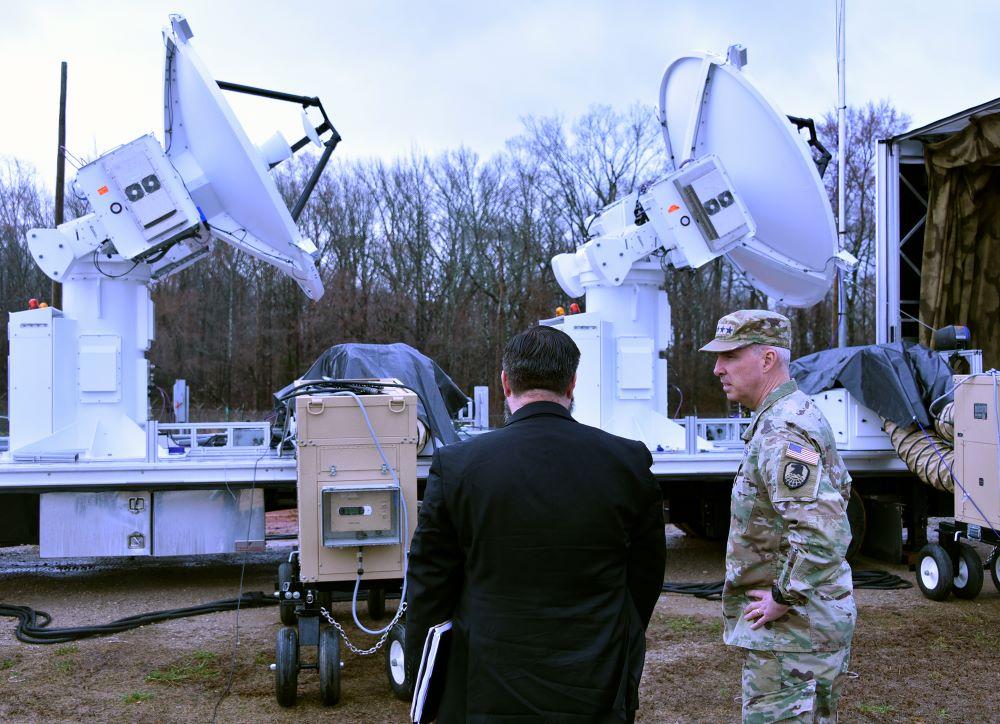
Russell Vela, chief of U.S. Army Space and Missile Defense Command’s Multi-Domain Technologies Division, briefs Gen. Stephen N. Whiting, commander of U.S. Space Command, on the USASMDC SPECTRE transportable distributed aperture research system in February.
HUNTSVILLE, Alabama–U.S. Space Command (USSPACECOM) has submitted a wish list of capability needs to the Joint Staff to help inform the Pentagon’s budgeting process for fiscal 2027, its commander Gen. Stephen Whiting said Aug. 6.
Missile defeat effects that can take on transregional ballistic, cruise and hypersonic missile threats, as well as air-launched and ground-launched direct ascent threats, top the command’s integrated priority list for fiscal ’27, Whiting said at the Space and Missile Defense Symposium here. The list was submitted to the Joint Staff on Aug. 6, he notes.
The concept of missile defeat involves two elements, according to the U.S. Army Space and Missile Defense Command. The first is integrated air and missile defense. This includes providing attack operations, active defense, and passive defense support to regional combatant commands, as well as battle management and command, control, communications, computers, intelligence, surveillance and reconnaissance (C4ISR) support. The second is “left of launch.” This means providing effects to “deny, delay, disrupt and degrade” missile threats in coordination with global combatant commands, the intelligence community, joint staff, interagency, and Office of the Secretary of Defense.
Army officials have called missile defeat the “next logical step” beyond missile defense, and included it in its 2023 Unified Command Plan publication, which also identified USSPACECOM as the unit responsible for transregional missile defense.
The command’s priority list also includes space fires to help the U.S. military establish space superiority, Whiting said. Army Space and Missile Defense Command Commander Lt. Gen. Sean Gainey described space fires from the service perspective as non-kinetic capabilities that support the Army’s ability to conduct offensive fires in a briefing with reporters at the conference.
Whiting highlighted four additional capabilities that USSPACECOM is looking to harness by fiscal 2027: enhanced battlespace awareness for space operations; “resilient, timely, and operational” space command and control to enhance machine-to-machine connectivity; space systems cyber defense capabilities that can protect critical space infrastructure from cyber attack; and an assured satellite telemetry, tracking and command architecture to operate in a contested environment.
